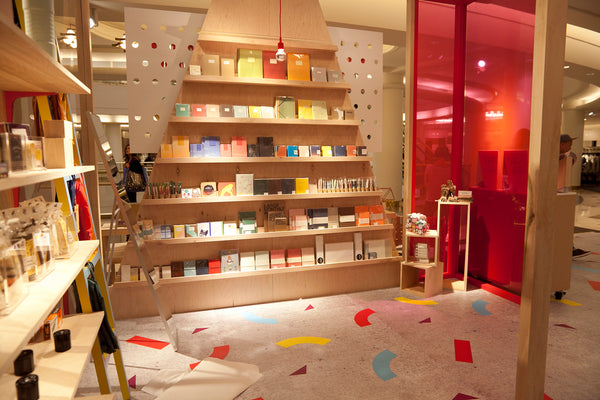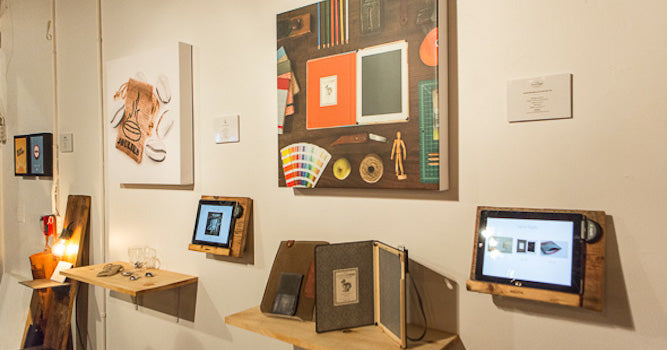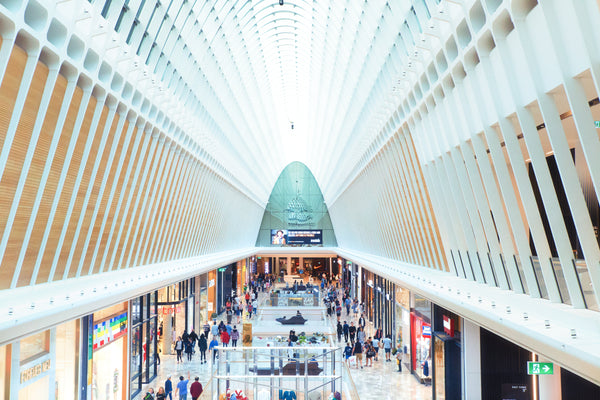As an ecommerce merchant, you might have a highly successful online store, a loyal community of customers in love with your brand, an audience of fans on social networks, and a question lurking in the back of your mind:
What’s next?
You’ve dominated the digital realm, now it’s time to start thinking about extending your reach into the world of physical retail. We firmly believe multichannel selling is the future of retail, so it isn't a bad idea to have more than one sales channels for your products as well.
But you don't have to sink significant cash into a full-fledged storefront to dip your toe in the offline sales world. Before you get too ahead of yourself, we'd suggest you explore the option of opening up a pop-up shop. A pop-up shop is a temporary retail activation which could last for a day or as long as three months, where you can sell your products without the headache of committing to a lease, managing swarms of employees, or thinking about how to consistently drive loads of foot traffic to your doorstep.
And the first rule of selling in a pop-up shop is the good old saying: “Location, location, location.” Here, we'll tackle the topic of figuring out the type of pop-up shop that works best for your business. By the end, you’ll have a good grasp on how to start a pop-up shop and plenty of location ideas to consider when you’re ready to take that step and start selling offline.
1. A Store-Within-a-Store

Image: Poketo
When starting your pop-up journey, you don't need to go it alone — at least not initially. You can partner up with another retailer to create a store within a store or a "pop-in."
Essentially, you'd work with a retail brand to set up a section of the store to display your products. Generally, you'd work with brands that sell similar or complementary products to your own. For example, Pintrill partnered up with Nordstrom to host a successful pop-in at the department store. The streetwear accessories brand eventually used that traction to open their first standalone store in Brooklyn.
Ecommerce brands without an offline presence can enjoy a number of benefits in this scenario — you typically get a move-in ready space that requires minimal setup while getting access to the store’s existing foot traffic. Meanwhile, the existing store owner will save on rent while generating new foot traffic from the the buzz you help create.
To get started, take a good look at your products and customers and make a list of all the small businesses, boutiques, or retail stores that would make excellent partners. Then craft your pitch: Establish some details of the partnership, including how you would help offset rent in return for shelf space, what your display would look like, and how long you run your pop-in.
2. Gallery or Event Space

While galleries and event spaces may not be top of mind when considering a pop-up shop, these venues can serve as a perfect blank canvas to translate your brand into a physical space.
Not only are these spaces aesthetically pleasing, more often than not, the space owners are often well seasoned when it comes to hosting events in the venue. They can be a fantastic resource to lean on for creating a seamless pop-up shop event and avoiding hiccups that newbies might typically encounter.
3. Farmer’s Markets

You’d be hard-pressed to find anyone who doesn’t love farmer’s market. In fact, you’d know if you’ve been to any that it’s probably one of those rare public occasions where you’d find so many people relaxed, chatting, and smiling while shopping.
A few things to consider before setting up a booth at your local farmer’s market is to check their vendor requirements and what kind of commitment they require. It’s also a good idea to speak with some of the existing vendors, especially if you know any personally, about their experience and what they’d recommend for getting started.
FURTHER READING: Need some help figuring out a killer market booth? Turn foot traffic into sales at your next farmer's market with these brilliant booth ideas.
4. Art and Craft Fairs

These events go by many names; whether they're festivals, fairs, or marketplaces, these events can be a great avenue to explore when selling in the physical world. The customers love unique products, personalized gifts, handmade accessories, and crafts from retailers like you, and they tend to love the idea of supporting local entrepreneurs.
Again, you’ll probably want to take a look at the event's website to obtain all the logistical details upfront, such as the cost, commitment, and spots available. You’ll probably want to take advantage of their first-come, first-served policy when it comes to booth placement to secure a high-traffic spot. Also, take the time to chat with vendors who go every year about their experiences.
FURTHER READING: To stay on top of weekend sales events, read our list of tactics to get organized for selling at markets, fairs, and festivals.
5. Other Mass Gatherings
 Maybe the crowd you’re targeting doesn’t frequent local art and craft fairs. Based on your knowledge of your target demographic, you’ll want to check out a wide assortment of other possibilities. I’m talking music festivals, concerts, sporting events, races, fitness expos, and any other mass gathering you can think of where what you sell would be appealing for those going there.
Maybe the crowd you’re targeting doesn’t frequent local art and craft fairs. Based on your knowledge of your target demographic, you’ll want to check out a wide assortment of other possibilities. I’m talking music festivals, concerts, sporting events, races, fitness expos, and any other mass gathering you can think of where what you sell would be appealing for those going there.
Make sure to do your due diligence once again, but these type of public events can be boon if you know your customers well enough to know where they like to hang out in their spare time. Help them find you and build your offline customer base one event at a time.
6. Shopping Center or Shopping Mall
 The local shopping mall is the hallmark of consumerism. Retailers both big and small can take advantage of the massive foot traffic that malls offer. But wait: how are you going to setup shop in a mall, of all places?
The local shopping mall is the hallmark of consumerism. Retailers both big and small can take advantage of the massive foot traffic that malls offer. But wait: how are you going to setup shop in a mall, of all places?
Generally, newbie retailers have two options: You can rent a kiosk or booth space that allows you to set up shop right in the middle of the action, or you can look at vacant in-line stores that the shopping center reserves just for pop-up shops or has had a hard time renting out long term.
Although renting a space in a shopping mall may be less cost-effective than the other venue ideas mentioned above, this would definitely be ideal for those who have a certain degree of experience selling in retail environments. And more major shopping centers are welcoming pop-up shops with open arms because of the buzz they bring to the space.
7. Vacant Street Level Retail Space
 The holy grail of commerce for some merchants is to have their very own thriving storefront. Though it may feel like a distant reality for many smaller merchants, it can be a potential option if the right opportunity presents itself.
The holy grail of commerce for some merchants is to have their very own thriving storefront. Though it may feel like a distant reality for many smaller merchants, it can be a potential option if the right opportunity presents itself.
Depending on the city or neighborhood where you'd like to host a pop-up shop, search for vacant commercial properties in the area. Contacting real estate agents for hard-to-lease commercial spaces can often land you a great deal on a beautiful storefront without the need for a lengthy retail lease.
Not only will you have the ultimate control over your retail environment, but you’d be playing in the proverbial retail big leagues.
Moving Forward With Your Own Pop-Up Shop
Now that you have some solid ideas to help you find the perfect pop-up shop venue, it's time for you to take action.
Ready to take the next step in your pop-up shop journey? Read our comprehensive guide to pop-up shops to learn how to host your very own.
